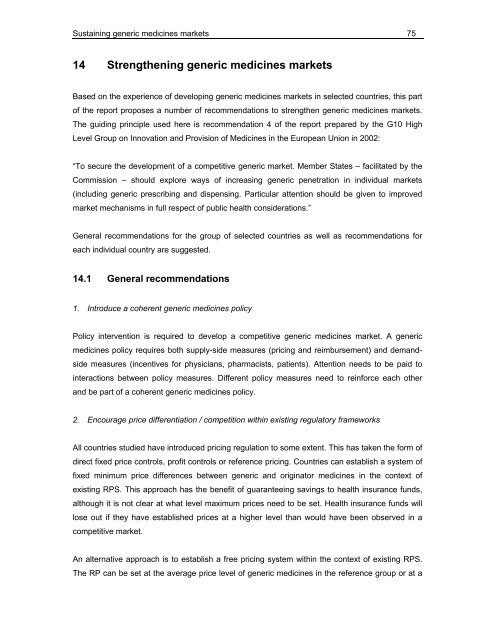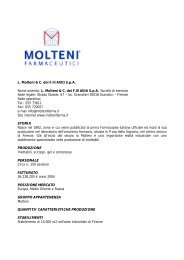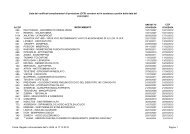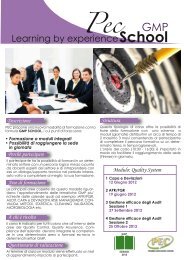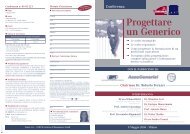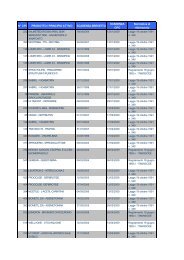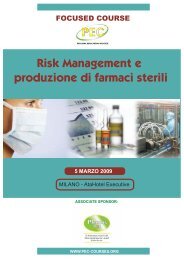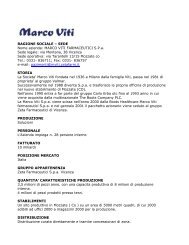Sustaining Generic Medicines Markets in Europe
Sustaining Generic Medicines Markets in Europe
Sustaining Generic Medicines Markets in Europe
You also want an ePaper? Increase the reach of your titles
YUMPU automatically turns print PDFs into web optimized ePapers that Google loves.
<strong>Susta<strong>in</strong><strong>in</strong>g</strong> generic medic<strong>in</strong>es markets 7514 Strengthen<strong>in</strong>g generic medic<strong>in</strong>es marketsBased on the experience of develop<strong>in</strong>g generic medic<strong>in</strong>es markets <strong>in</strong> selected countries, this partof the report proposes a number of recommendations to strengthen generic medic<strong>in</strong>es markets.The guid<strong>in</strong>g pr<strong>in</strong>ciple used here is recommendation 4 of the report prepared by the G10 HighLevel Group on Innovation and Provision of <strong>Medic<strong>in</strong>es</strong> <strong>in</strong> the <strong>Europe</strong>an Union <strong>in</strong> 2002:“To secure the development of a competitive generic market. Member States – facilitated by theCommission – should explore ways of <strong>in</strong>creas<strong>in</strong>g generic penetration <strong>in</strong> <strong>in</strong>dividual markets(<strong>in</strong>clud<strong>in</strong>g generic prescrib<strong>in</strong>g and dispens<strong>in</strong>g. Particular attention should be given to improvedmarket mechanisms <strong>in</strong> full respect of public health considerations.”General recommendations for the group of selected countries as well as recommendations foreach <strong>in</strong>dividual country are suggested.14.1 General recommendations1. Introduce a coherent generic medic<strong>in</strong>es policyPolicy <strong>in</strong>tervention is required to develop a competitive generic medic<strong>in</strong>es market. A genericmedic<strong>in</strong>es policy requires both supply-side measures (pric<strong>in</strong>g and reimbursement) and demandsidemeasures (<strong>in</strong>centives for physicians, pharmacists, patients). Attention needs to be paid to<strong>in</strong>teractions between policy measures. Different policy measures need to re<strong>in</strong>force each otherand be part of a coherent generic medic<strong>in</strong>es policy.2. Encourage price differentiation / competition with<strong>in</strong> exist<strong>in</strong>g regulatory frameworksAll countries studied have <strong>in</strong>troduced pric<strong>in</strong>g regulation to some extent. This has taken the form ofdirect fixed price controls, profit controls or reference pric<strong>in</strong>g. Countries can establish a system offixed m<strong>in</strong>imum price differences between generic and orig<strong>in</strong>ator medic<strong>in</strong>es <strong>in</strong> the context ofexist<strong>in</strong>g RPS. This approach has the benefit of guarantee<strong>in</strong>g sav<strong>in</strong>gs to health <strong>in</strong>surance funds,although it is not clear at what level maximum prices need to be set. Health <strong>in</strong>surance funds willlose out if they have established prices at a higher level than would have been observed <strong>in</strong> acompetitive market.An alternative approach is to establish a free pric<strong>in</strong>g system with<strong>in</strong> the context of exist<strong>in</strong>g RPS.The RP can be set at the average price level of generic medic<strong>in</strong>es <strong>in</strong> the reference group or at a


